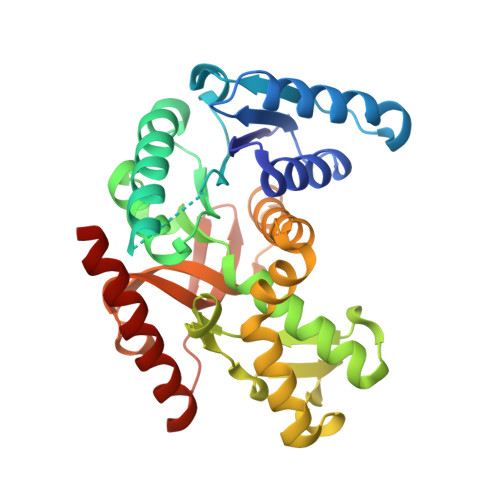Stabilization of a Tetrameric Malate Dehydrogenase by Introduction of a Disulfide Bridge at the Dimer-Dimer Interface
Bjork, A., Dalhus, B., Mantzilas, D., Eijsink, V.G.H., Sirevag, R.(2003) J Mol Biol 334: 811
- PubMed: 14636605
- DOI: https://doi.org/10.1016/j.jmb.2003.10.006
- Primary Citation of Related Structures:
1UR5 - PubMed Abstract:
Malate dehydrogenase (MDH) from the moderately thermophilic bacterium Chloroflexus aurantiacus (CaMDH) is a tetrameric enzyme, while MDHs from mesophilic organisms usually are dimers. To investigate the potential contribution of the extra dimer-dimer interface in CaMDH with respect to thermal stability, we have engineered an intersubunit disulfide bridge designed to strengthen dimer-dimer interactions. The resulting mutant (T187C, containing two 187-187 disulfide bridges in the tetramer) showed a 200-fold increase in half-life at 75 degrees C and an increase of 15 deg. C in apparent melting temperature compared to the wild-type. The crystal structure of the mutant (solved at 1.75 A resolution) was essentially identical with that of the wild-type, with the exception of the added inter-dimer disulfide bridge and the loss of an aromatic intra-dimer contact. Remarkably, the mutant and the wild-type had similar temperature optima and activities at their temperature optima, thus providing a clear case of uncoupling of thermal stability and thermoactivity. The results show that tetramerization may contribute to MDH stability to an extent that depends strongly on the number of stabilizing interactions in the dimer-dimer interface.
Organizational Affiliation:
Department of Biology, University of Oslo, PO Box 1031 Blindern, N-0316 Oslo, Norway. alexandra.bjork@bio.uio.no


















